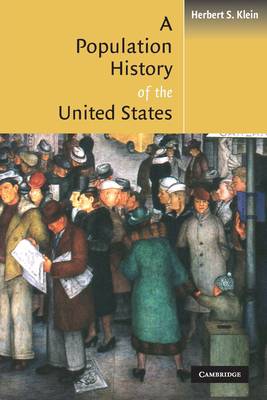
Vous voulez être sûr que vos cadeaux seront sous le sapin de Noël à temps? Nos magasins vous accueillent à bras ouverts. La plupart de nos magasins sont ouverts également les dimanches, vous pouvez vérifier les heures d'ouvertures sur notre site.
- Retrait gratuit dans votre magasin Club
- 7.000.000 titres dans notre catalogue
- Payer en toute sécurité
- Toujours un magasin près de chez vous
Vous voulez être sûr que vos cadeaux seront sous le sapin de Noël à temps? Nos magasins vous accueillent à bras ouverts. La plupart de nos magasins sont ouverts également les dimanches, vous pouvez vérifier les heures d'ouvertures sur notre site.
- Retrait gratuit dans votre magasin Club
- 7.000.0000 titres dans notre catalogue
- Payer en toute sécurité
- Toujours un magasin près de chez vous
44,95 €
+ 89 points
Format
Description
A Population History of the United States is the first full-scale one volume survey of the demographic history of this country. It starts with the arrival of humans in the Western Hemisphere and ends with the current century. The basic trends in the growth of the national population are analyzed over centuries, including the changing nature of births, deaths, and migration of this population and the various factors which influenced these basic trends. The origin and distribution of pre-European American Indians is outlined, and the free and servile nature of European and African immigration is explained. Regional patterns of marriage and fertility and disease and morality in the pre-1800 European and African population are examined and compared with contemporary European developments. The decline of fertility and the rising rates of mortality are surveyed in the 19th century along with the mobility of population across the continent and into the cities. The decline of disease and mortality in the 20th century is explained and the late 20th century changes in family structure and fertility detailed. The rise of suburbs and the creation of inner city ghettos form a vital part of recent trends as do the return of new waves of foreign immigrants in the face of declining native births. Herbert S. Klein is Gouverneur Morris Professor of History at Columbia University and Research Fellow at the Hoover Institution, Stanford University and has recently written A Concise History of Bolivia (Cambridge, 2002) and co-authored Slave and Economy in Sao Paolo, Brazil, 1750-1850 (Stanford, 2002). He is also the author of The Atlantic Slave Trade (Cambridge, 1999) and Haciendas and Ayllus: Rural Society in the Bolivian Andes (Stanford, 1992).
Spécifications
Parties prenantes
- Auteur(s) :
- Editeur:
Contenu
- Nombre de pages :
- 316
- Langue:
- Anglais
Caractéristiques
- EAN:
- 9780521788106
- Date de parution :
- 22-03-04
- Format:
- Livre broché
- Format numérique:
- Trade paperback (VS)
- Dimensions :
- 155 mm x 224 mm
- Poids :
- 430 g







